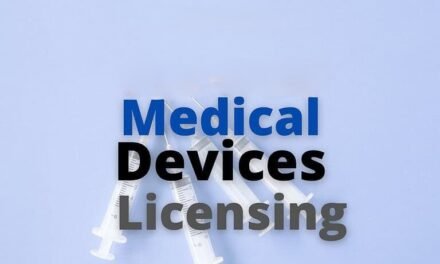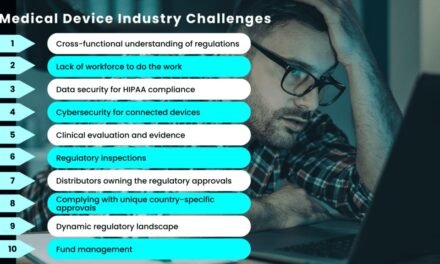
What innovations are driving the production of green medical devices?

Innovations driving the production of green medical devices are transforming the industry by reducing environmental impacts, improving sustainability, and meeting growing demandthe for eco-friendly solutions. These innovations span materials, manufacturing processes, product design, and end-of-life management, fostering a shift toward more sustainable healthcare technologies.
1. Advanced Biodegradable Materials
- Bio-Based Polymers: Materials derived from renewable sources like corn starch, cellulose, and polylactic acid (PLA) are being used to create biodegradable components.
- Example: Biodegradable sutures and drug delivery systems.
- Resorbable Polymers: Materials that safely dissolve in the body after use, reducing waste.
- Example: Bioresorbable stents used in cardiovascular treatments.
- Plant-Based Alternatives: Replacing petroleum-based plastics with plant-based options for single-use devices like syringes or catheters.
2. Modular and Reusable Designs
- Modular Systems: Devices with interchangeable components allow for easy repair, upgrades, or recycling.
- Example: Modular imaging systems where individual parts can be replaced or upgraded without discarding the entire unit.
- Reusable Devices: Durable products designed for repeated use, such as surgical instruments with enhanced sterilization capabilities.
- Example: Reusable laparoscopic tools that reduce reliance on disposable alternatives.
3. Additive Manufacturing (3D Printing)
- Reduced Material Waste: Additive manufacturing uses only the material needed, minimizing waste compared to traditional subtractive manufacturing methods.
- Custom Designs: Enabling personalized, patient-specific devices like prosthetics and implants that optimize material usage.
- Example: 3D-printed orthopedic implants tailored to individual anatomy.
4. Energy-Efficient Manufacturing
- Advanced Robotics: Automation reduces energy consumption and improves precision in production, minimizing resource waste.
- Green Energy Integration: Utilizing renewable energy sources, such as solar or wind power, in manufacturing facilities.
- Low-Temperature Sterilization: Developing sterilization methods like hydrogen peroxide vapor and gamma irradiation that consume less energy compared to traditional autoclaving.
5. Recyclable and Disassemblable Devices
- Nanomaterial are made from a single type of recyclable material to simplify recycling processes.
- Ease of Disassembly: Designing devices to be easily taken apart for recycling or material recovery.
- Example: Electronics with detachable batteries and circuit boards.
6. Smart Packaging Solutions
- Biodegradable Packaging: Using compostable materials for sterile packaging of medical devices.
- Minimalistic Design: Reducing packaging material without compromising sterility or safety.
- Active Packaging: Incorporating sensors to extend shelf life and reduce waste in supply chains.
7. Renewable and Sustainable Materials
- Natural Fibers: Integrating fibers like bamboo and hemp into non-invasive devices or textiles used in healthcare.
- Sustainable Metals: Using recycled or sustainably sourced metals in devices like surgical instruments and implants.
8. IoT-Enabled Devices for Predictive Maintenance
- Smart Devices: IoT integration enables real-time monitoring of device performance, predicting maintenance needs to extend the lifecycle.
- Example: IoT-enabled ventilators that alert technicians for timely servicing, reducing waste from premature disposal.
9. Circular Economy Practices
- Device Refurbishment: Refurbishing and re-certifying used medical devices to extend their lifecycle and reduce waste.
- Example: Refurbished imaging equipment like MRI and CT scanners.
- Component Recovery: Recovering valuable materials like rare earth metals and plastics for reuse in new devices.
10. Sustainable Sterilization Methods
- Chemical-Free Sterilization: Using ozone or plasma sterilization technologies that eliminate harmful chemicals like ethylene oxide.
- Reusable Sterile Barriers: Developing durable materials for reusable sterile covers and barriers in surgical environments.
11. Digital Health and Telemedicine Devices
- Remote Monitoring Tools: Reducing the environmental impact of in-person visits by enabling remote health management.
- Example: Wearable devices for continuous glucose monitoring or cardiac health tracking.
- Virtual Diagnostics: Tools that reduce resource-intensive diagnostic procedures by enabling early detection and intervention at home.
12. Microfluidic Devices
- Lab-on-a-Chip Technology: Compact devices that use tiny amounts of reagents and samples for diagnostics, reducing waste.
- Example: Point-of-care diagnostic devices for blood tests.
13. AI-Optimized Design
- Efficient Prototyping: AI tools optimize device designs to minimize material use while maximizing performance.
- Lifecycle Optimization: AI predicts device wear-and-tear patterns, enabling designs with extended lifespans.
14. Green Supply Chain Integration
- Eco-Friendly Logistics: Transitioning to electric or fuel-efficient transport for medical device distribution.
- Local Manufacturing: Reducing carbon emissions by manufacturing closer to end markets.
15. Bioprinting and Regenerative Medicine
- Tissue Engineering: Bioprinting human tissues and organs reduces the need for synthetic implants and minimizes waste.
- Example: bioprinted skin grafts for burn victims.
16. Low-Waste Diagnostic Kits
- Compact Kits: Redesigning diagnostic kits to use fewer materials while maintaining accuracy and safety.
- Reagent-Free Diagnostics: Innovations in sensor-based technologies reduce the need for chemical reagents.
17. Compliance with Environmental Standards
- ISO 14001 Certification: Driving sustainable practices through robust environmental management systems.
- EPEAT and Green Certifications: Developing products that meet green certifications to demonstrate eco-friendliness.
18. Partnerships and Collaborations
- Sustainability Consortia: Joining industry groups like the Healthcare Plastics Recycling Council (HPRC) to share best practices.
- Cross-Industry Innovations: Collaborating with other industries (e.g., aerospace or electronics) to adopt green technologies.
19. Education and Awareness
- Stakeholder Engagement: Educating healthcare providers and consumers about sustainable practices, such as recycling or proper disposal of devices.
- Eco-Friendly Branding: Highlighting green features in marketing to promote environmentally conscious products.
20. Lifecycle Analysis (LCA) Integration
- Environmental Impact Monitoring: Using LCA tools to identify and reduce the environmental footprint of medical devices.
- Sustainability Metrics: Tracking carbon emissions, energy use, and material recovery rates to inform design decisions.
Innovations in materials, manufacturing, design, and lifecycle management are driving the production of green medical devices. By adopting these technologies and practices, the medical device industry can reduce its environmental footprint, meet regulatory demands, and align with the growing expectations of environmentally conscious consumers and healthcare providers. These advancements not only contribute to sustainability but also position companies as leaders in the transition toward greener healthcare solutions.




























